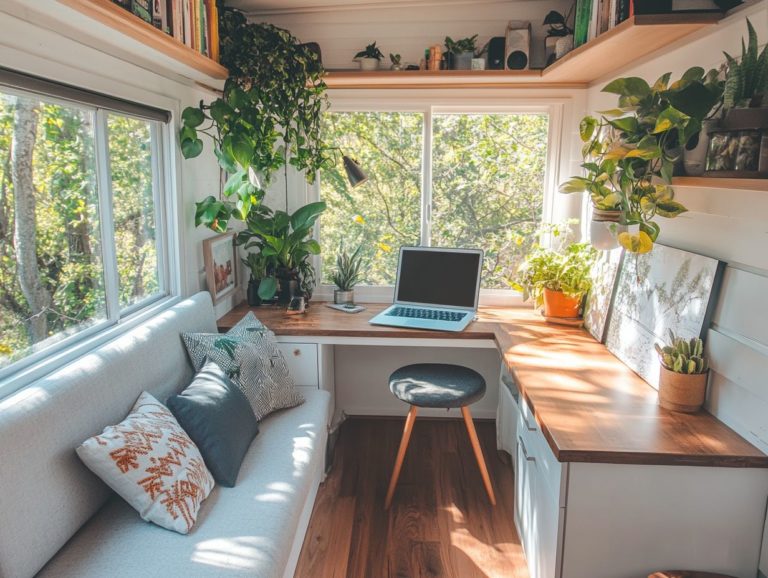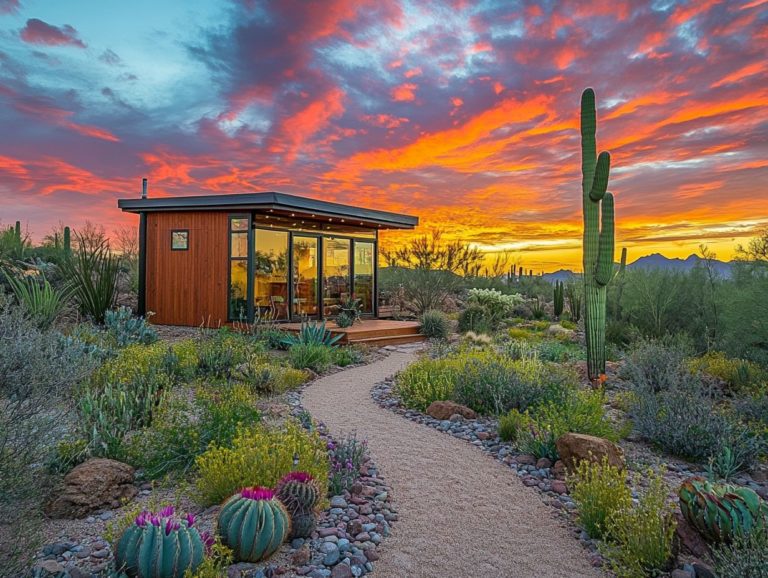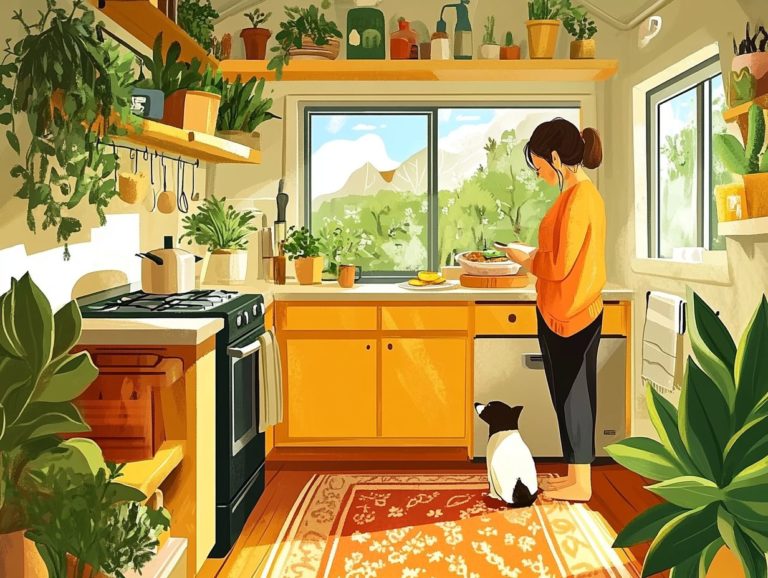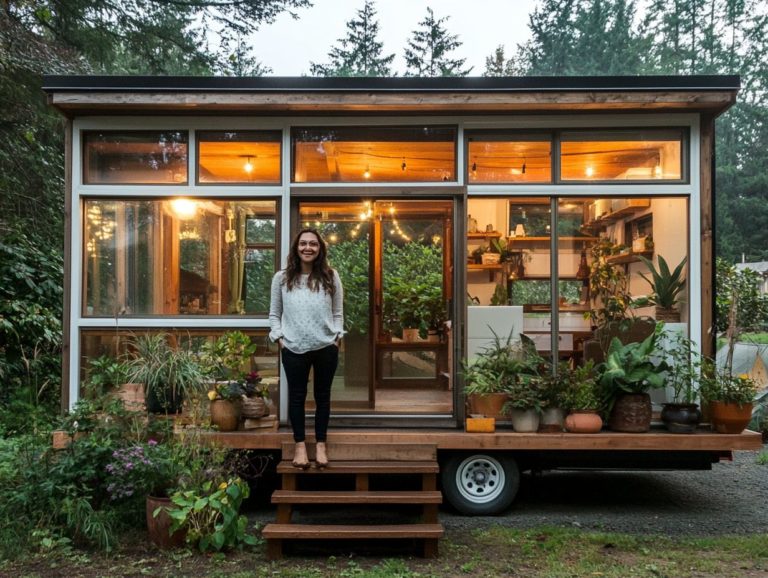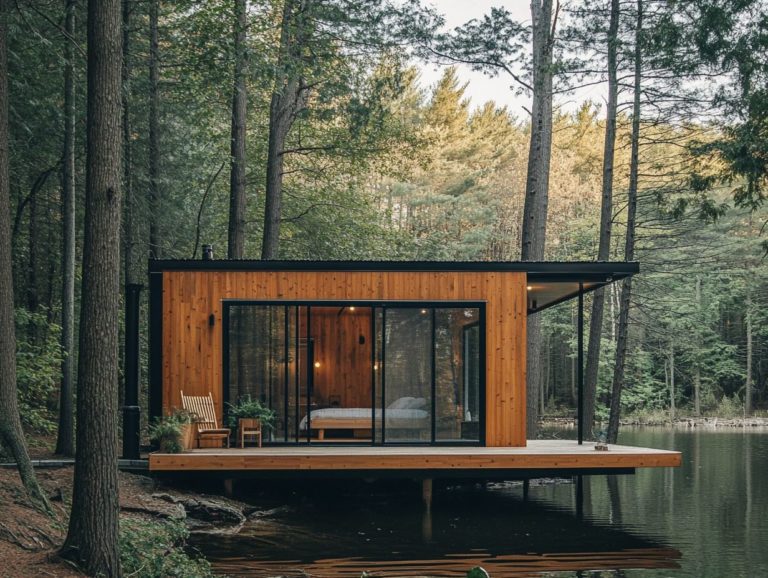Understanding the Tiny House Movement
The Tiny House Movement has gained substantial momentum in recent years, drawing in those who aspire to lead a simpler, more sustainable lifestyle.
So, what does this movement really involve? This article delves into the fundamental principles of tiny living, tracing its history and evolution.
It highlights many reasons people choose tiny houses, from financial freedom to a heightened sense of environmental responsibility.
It also discusses the different types of tiny homes, offers practical tips for building and designing your own, and outlines the unique challenges and benefits that come with embracing this minimalist lifestyle.
Whether you’re contemplating a tiny house for yourself or are simply intrigued by the movement, this guide is packed with insights that can change your life!
Contents [hide]
Key Takeaways:
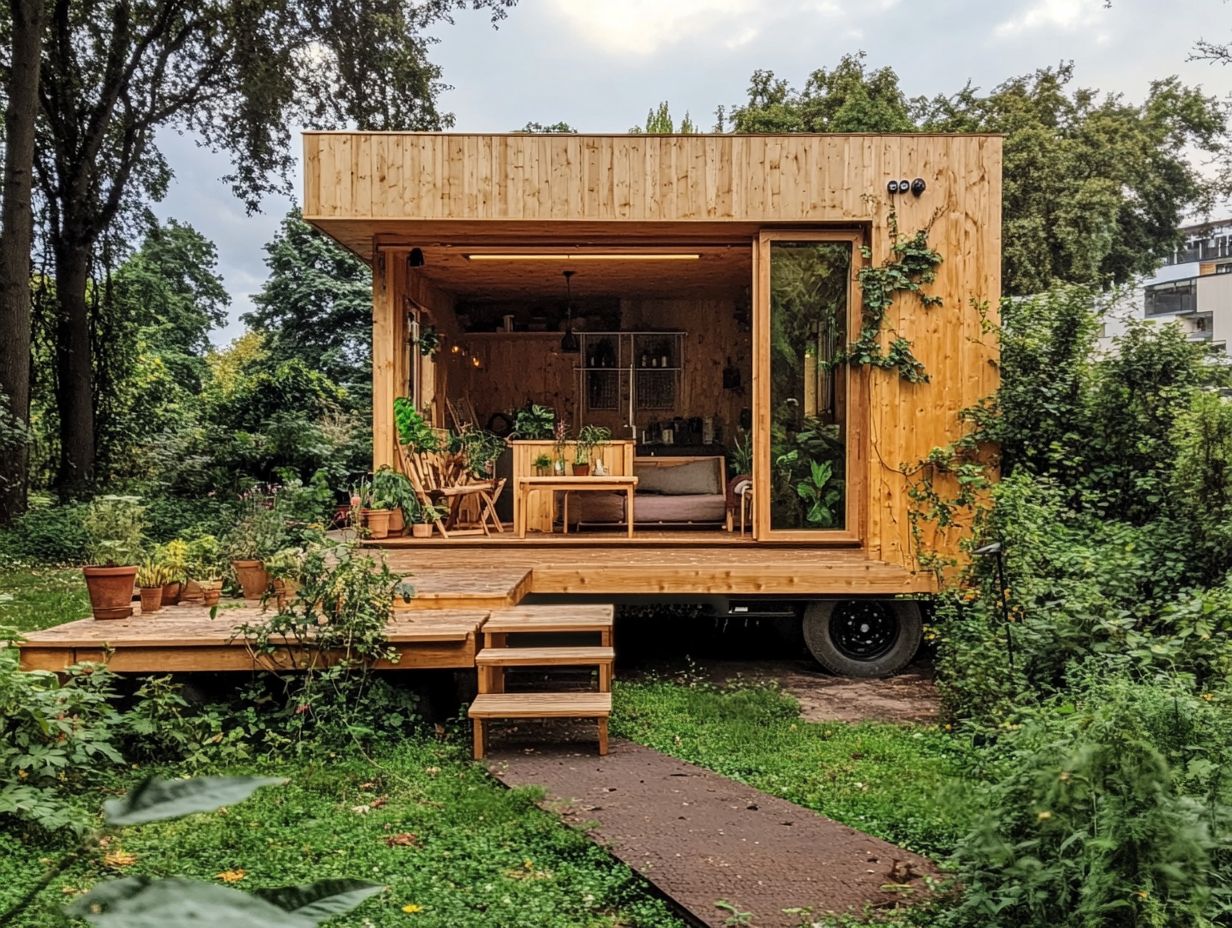
- The Tiny House Movement is a growing trend that promotes simple and sustainable living in small, efficient homes.
- There are various reasons for choosing a tiny house, including financial savings, minimizing environmental impact, and embracing a minimalist lifestyle.
- Before committing to the tiny house lifestyle, it is important to consider the challenges and benefits, and assess if it aligns with your needs and goals.
What is the Tiny House Movement?
The Tiny House Movement represents a remarkable social and architectural shift that champions the idea of downsizing living spaces. It presents tiny homes as an eco-friendly solution for today s housing problems.
This movement invites you to consider not just affordability and self-sufficiency (the ability to meet your own needs without depending on others), but an entirely simpler way of life, prompting a reevaluation of your perspective on home ownership.
By prioritizing design efficiency and mobility, it aligns seamlessly with the increasing trend toward environmental awareness and a longing for sustainable living.
As communities in states like California, Oregon, and Texas wholeheartedly embrace these principles, the movement steadily builds momentum, captivating more individuals along the way.
Defining the Concept
At its core, the Tiny House Movement invites you to embrace the allure of tiny homes, emphasizing simplicity, affordability, and financial advantages. This lifestyle enables you to live with fewer possessions while significantly reducing your living costs.
These compact living spaces typically span from 100 to 400 square feet, expertly designed to maximize efficiency and minimize waste. With innovative layouts that incorporate multifunctional furniture, you’ll discover cozy yet practical living options that adapt seamlessly to your needs.
The sense of community in tiny house living adds to its appeal. Many individuals find themselves drawn to tiny house villages, where shared values of sustainability and self-sufficiency thrive.
As you reduce your ecological footprint, you’ll also enjoy remarkable savings on utilities and maintenance.
Ultimately, this movement encourages a more intentional lifestyle, promoting financial freedom that enables you to prioritize experiences over material possessions.
History of the Tiny House Movement
The Tiny House Movement traces its origins back to the early 2000s, gaining momentum through visionaries like Jay Shafer, who brought the concept to life with innovative designs and principles of sustainable living.
By 2015, this movement had blossomed into a global sensation, championing environmentally conscious lifestyles and redefining traditional ideas of home ownership.
You might find that factors such as soaring property taxes, the quest for affordable housing, and heightened awareness of environmental issues have fueled this movement, making it an increasingly appealing choice for countless individuals seeking a different way of living.
Origins and Evolution
The origins of the Tiny House Movement can be traced back to a blend of influences. Notably, NASA’s early explorations into compact living solutions ignited a passion for efficient design.
This research paved the way for innovations that comply with contemporary building codes and local regulations.
As time passed, this spirit of innovation captured the attention of visionaries and advocates eager to challenge the status quo of traditional housing. With societal shifts highlighting the demand for sustainable living and affordable alternatives, many individuals embraced minimalism.
This marked a significant transformation in the perception of home ownership.
Thanks to advancements in materials and construction techniques, today’s tiny homes are exceptionally functional and cleverly designed. They often feature eco-friendly systems such as solar power and composting toilets toilets that turn waste into compost, reducing water usage aligning with modern sustainable practices.
This evolution goes hand in hand with regulatory developments, as local governments adapt their policies to support this burgeoning movement and help individuals realize their dreams of downsizing.
Reasons for Choosing a Tiny House
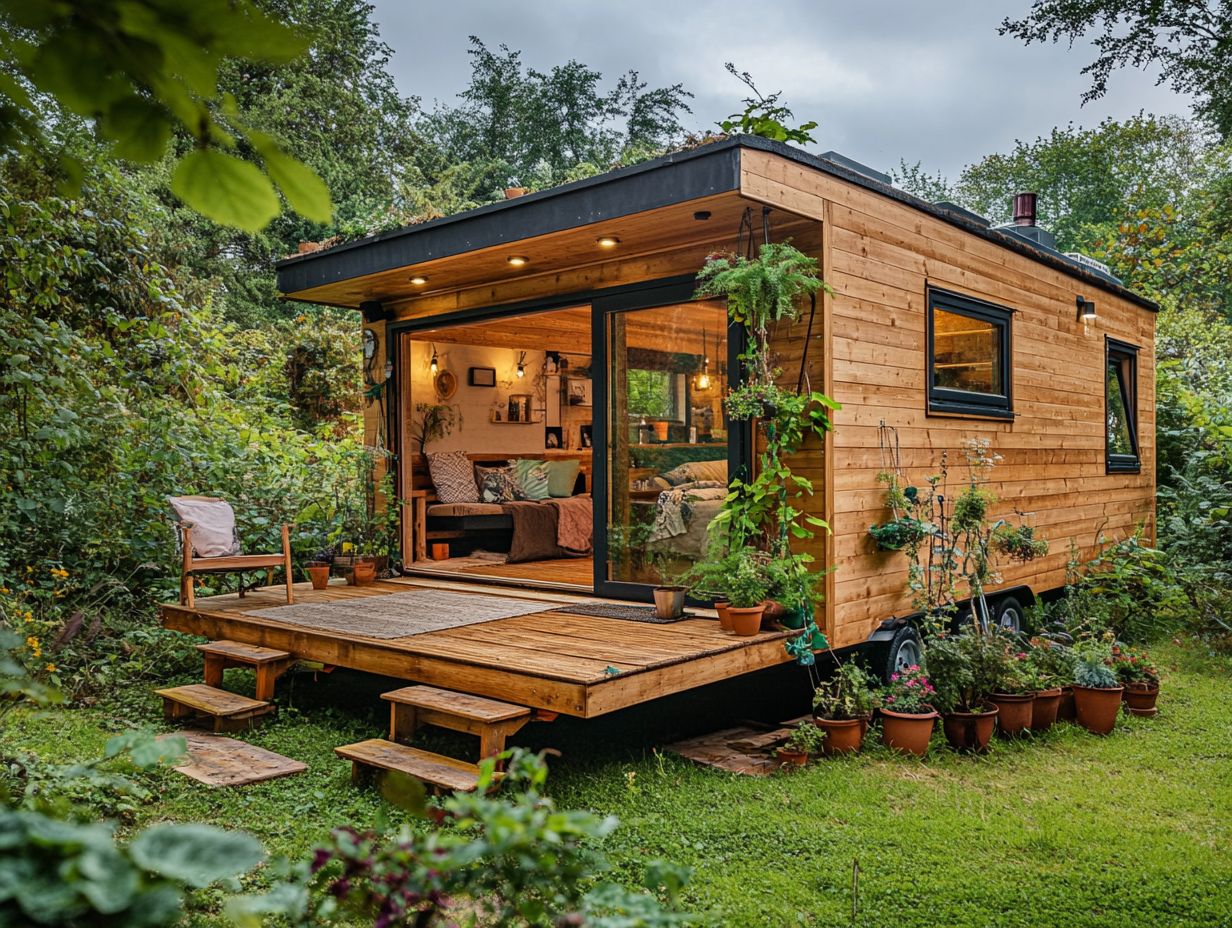
Many people are excited about tiny houses for fantastic reasons. These include substantial financial advantages, greater mobility and flexibility, and a deep-seated commitment to environmental consciousness.
This trend encourages a simpler way of living and fosters sustainable lifestyle choices that resonate with many today.
Financial, Environmental, and Lifestyle Factors
Financial considerations, such as lower property taxes and the pursuit of affordable housing, along with a desire to be self-sufficient, are key motivators for anyone contemplating a tiny home.
You might find yourself increasingly attracted to minimalism, a philosophy that encourages decluttering your life and possessions to focus on what truly matters. This trend fits beautifully with the tiny home movement, as smaller living spaces promote a simpler, more intentional way of life.
As you explore these possibilities, you may discover that the reduced environmental footprint of tiny houses allows for a deeper connection to nature.
The option for mobile living can open up exciting avenues for travel and exploration, enabling you to redefine your sense of place and community.
Taken together, these interwoven factors make tiny homes an enticing choice for those seeking fulfillment beyond conventional standards.
Types of Tiny Houses
The array of tiny homes available today encompasses micro-apartments, mobile units, and off-grid designs, each carefully made to cater to your unique needs and preferences as you explore places to live.
From Mobile to Off-grid: Exploring Different Options
Imagine stepping into the world of mobile tiny houses, where unmatched mobility and flexibility redefine your living experience. From off-grid options that prioritize sustainability to innovative designs that enhance community living, there s a wealth of architectural brilliance waiting to be discovered.
These designs embody a commitment to minimalism and encourage a deeper connection with nature. Picture yourself in a mobile tiny house, outfitted with compact, multifunctional furniture that allows you to travel across breathtaking landscapes while feeling right at home.
Conversely, the allure of off-grid living offers a self-sufficient lifestyle, relying on renewable energy sources and water conservation techniques. While the former grants you the freedom to roam, the latter champions ecological responsibility.
However, it s essential to recognize that both paths come with challenges, including zoning regulations and initial investment costs. These are critical factors to weigh as you consider embarking on this unique lifestyle journey.
Now is the perfect time to explore tiny living! Are you ready to dive into the exciting world of tiny homes?
Building and Designing a Tiny House
When you embark on the journey of building and designing a tiny house, it’s essential to consider various factors. Adhering to local regulations and building codes is crucial, as is planning your house layout.
This attention to detail ensures that your design maximizes efficiency and enhances functionality within the charming confines of a compact space.
Considerations and Tips for Construction
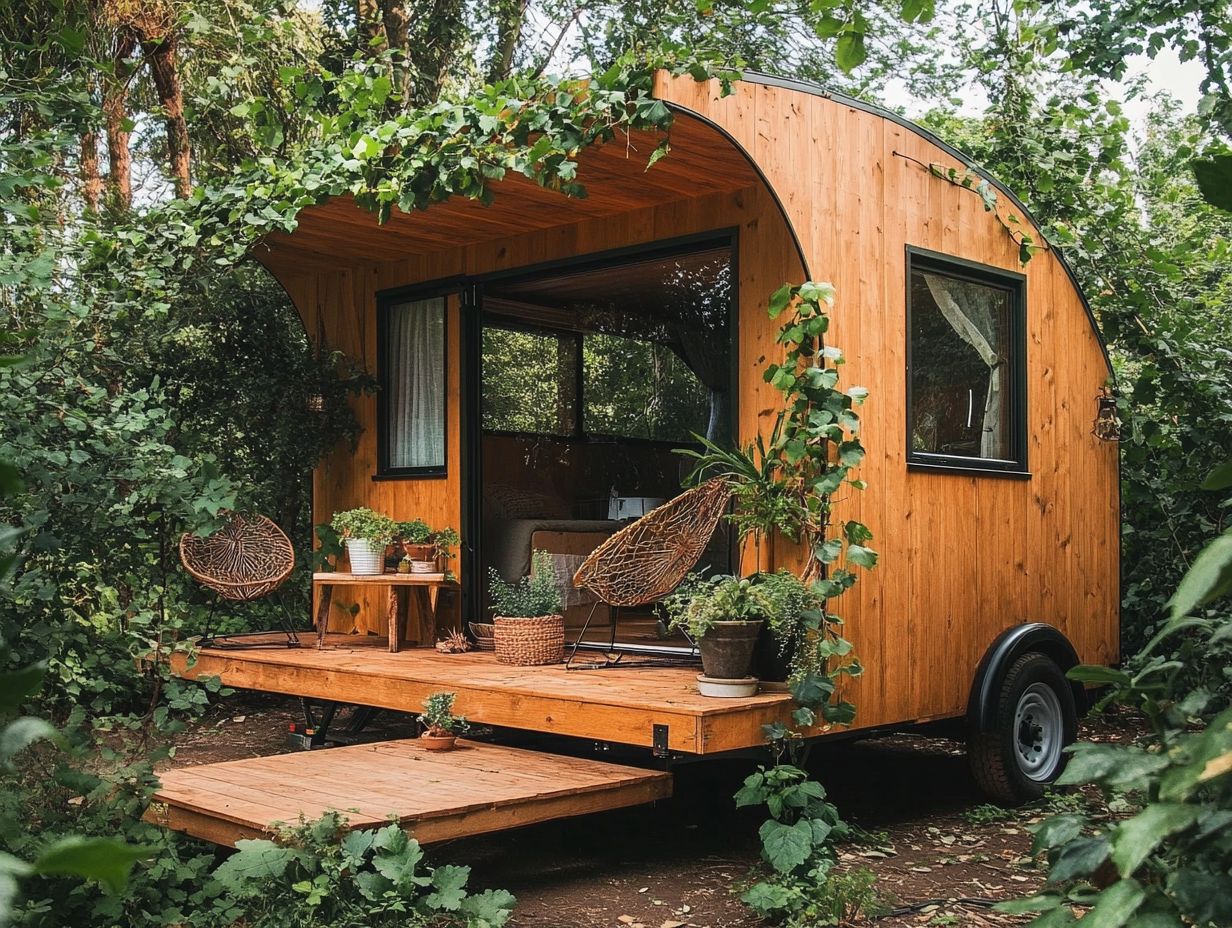
When constructing a tiny house, prioritize design efficiency, ensure compliance with building codes, and incorporate environmentally friendly materials and practices. This approach enhances your overall livability and plays a vital role in reducing your environmental footprint.
Researching local zoning laws and regulations is critical. These can influence your design choices and the permits you ll need. Selecting renewable materials like reclaimed wood and non-toxic paints promotes ecological integrity.
Integrating energy-efficient appliances and solar panels helps lower utility costs and reduces reliance on non-renewable resources. Thoughtfully planning each aspect of your construction creates a cozy haven that aligns with your values and the planet s well-being.
Challenges and Benefits of Living in a Tiny House
Living in a tiny house offers a unique blend of challenges and benefits. Adapting to a smaller space can test your creativity and organization skills.
However, this lifestyle also brings heightened self-sufficiency and a sense of financial freedom. Embracing minimalism leads to a more intentional, fulfilling way of life.
Adapting to a Smaller Space and Lifestyle
Adapting to a smaller space invites you to embrace a simpler life, where community living and environmental awareness become central to your routines.
This shift encourages prioritizing meaningful connections with neighbors and exploring shared resources, changing your view of ownership and personal space.
By emphasizing minimalism, you streamline your belongings and cultivate a deeper appreciation for the essentials.
Engaging in local sustainability initiatives, joining community gardens, or participating in co-housing projects enhances your experience, allowing you to thrive in a supportive environment.
Ultimately, these changes foster a sense of belonging, enabling you to coexist harmoniously while committing to a greener, more efficient lifestyle.
Is the Tiny House Movement Right for You?
Thinking about whether the Tiny House Movement aligns with your vision requires evaluating your personal needs and aspirations. Reflect on what affordable housing means to you and how a sustainable lifestyle could embody your core values.
This introspection guides your decision on if this minimalist approach fits your life journey.
Assessing Your Needs and Goals
Assessing your needs and goals allows you to reflect on your aspirations for self-sufficiency, community living, and environmental consciousness in harmony with the Tiny House Movement.
This encourages considering how simplifying your lifestyle aligns with your values. As you contemplate tiny living, think about how reducing your material possessions could lead to financial savings and grant you a profound sense of freedom.
Many find that this lifestyle fosters a deeper connection to their community and promotes sustainable practices that honor the planet.
By evaluating what truly matters, you pave the way for a more intentional existence, transforming your dreams into a tangible reality within the tiny living landscape.
Ready to start your tiny house adventure? Begin planning today!
Frequently Asked Questions
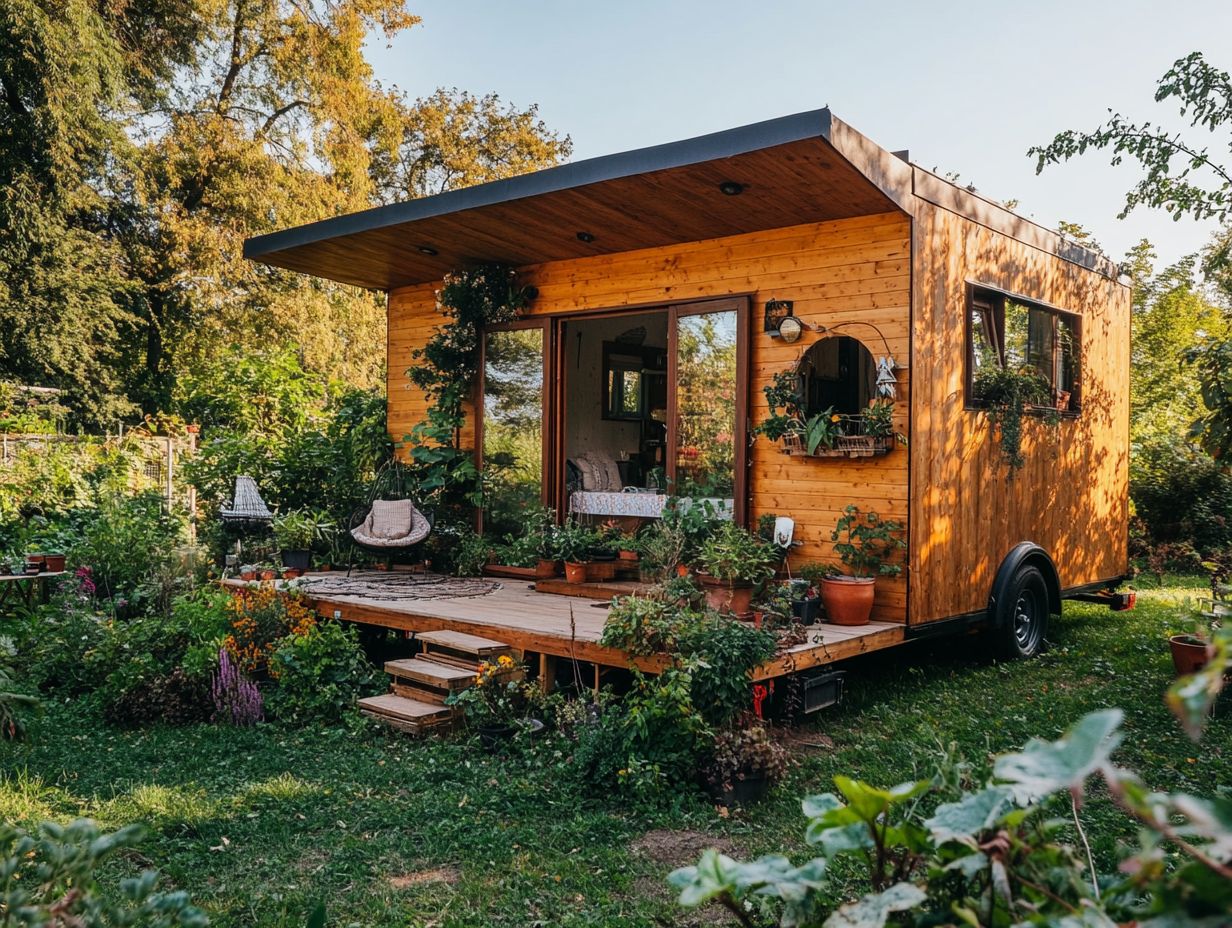
What is the Tiny House Movement?
The Tiny House Movement is a social and architectural trend that supports living in small and practical homes. It promotes a simpler, more sustainable lifestyle.
What are the benefits of understanding the Tiny House Movement?
Discovering the Tiny House Movement could change your life! You ll save money and embrace a simpler, more sustainable lifestyle.
Is the Tiny House Movement a new concept?
This idea has been around for centuries. However, modern interest surged in the early 2000s due to rising housing costs and environmental concerns.
Do all tiny houses have the same design?
No, there s no standard design for tiny houses. They include tiny homes on wheels, backyard cottages, and studio apartments, varying by builder and personal taste.
Can anyone live in a tiny house?
Yes, technically anyone can live in a tiny house. However, some cities have strict zoning laws that make it hard to live in one legally, so research regulations first.
Is living in a tiny house suitable for families?
Yes, tiny houses can also be great for families with children. Just consider the space and challenges of living in a smaller environment.

